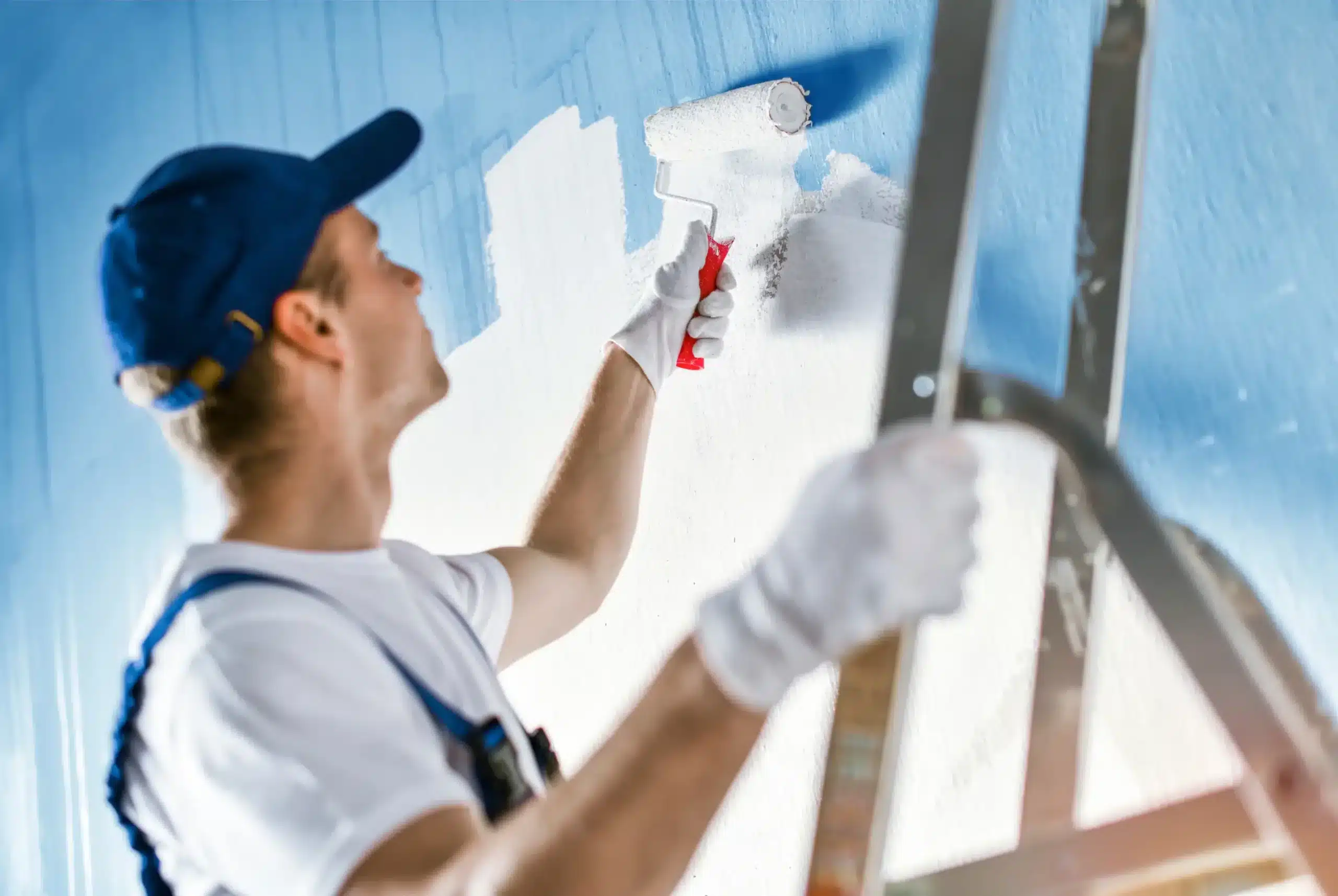Starting a house painting project is like setting off on a creative adventure. It’s your chance to refresh your home, add personality to your walls, and even boost your mood whenever you walk into a freshly painted room. But let’s be real: painting your house can be a bit of a mixed bag. On one hand, it’s exciting to envision the end result. On the other, so many little things can go wrong, turning what should be a fun update into a bit of a headache. But don’t worry!
This article is all about 10 common house painting mistakes to avoid. We will dive into what these common slip-ups are, why they happen, and how to sidestep them so you can enjoy your beautiful new space. Whether you’re a seasoned DIYer or picking up a paintbrush for the first time, a little know-how can go a long way in ensuring your house painting project goes smoothly from start to finish.
10 House Painting Mistakes to Avoid
Here’s a focused look at house painting mistakes to avoid and what to do instead to ensure a flawless finish:

1. Not Properly Prepping the Surface
Bypassing the necessary steps of cleaning, sanding, and priming the walls before painting is one of the common house painting mistakes to avoid. This oversight can lead to paint not adhering properly, resulting in an uneven, rough finish prone to peeling.
Invest time in thorough surface preparation. Clean walls with a mild detergent solution to remove dirt, oils, and other residues. Sand down rough areas or any peeling paint to create a smooth surface. Apply a suitable primer to ensure the paint adheres correctly and provides a uniform base for color application. This foundational work is key to a long-lasting, professional-looking paint job.
2. Choosing the Wrong Type of Paint
One of the house painting mistakes to avoid is choosing the wrong type of paint. Here’s what you should consider when preparing for the interior painting:
3. Painting in Extreme Weather Conditions
Many DIY painters underestimate the impact of weather on paint application and drying. Painting in very cold conditions can slow down the drying process, leading to drips and sagging. On the flip side, hot weather can cause paint to dry too quickly, potentially leading to a lackluster finish with visible lap marks.
Timing is everything! Aim to paint on days with mild temperatures and low humidity. Maintaining a controlled environment away from extreme heat or cold for interior projects can lead to better results. If you must paint in less-than-ideal conditions, look for paints specifically formulated for those temperatures.
4. Not Using the Right Tools
The temptation to save money by purchasing cheap brushes and rollers is one of the house painting mistakes to avoid. Inferior tools can lead to many problems, including uneven application, brush marks, and excessive shedding of bristles or roller fibers.
Investing in high-quality painting tools can significantly enhance the finish of your paint project. Synthetic brushes and rollers are preferred for water-based paints as they don’t absorb water and lose shape. For oil-based paints, natural bristle brushes provide a smooth, even coat. Also, match the size and style of the brush or roller to the specific area you are painting for the best results.
5. Failing to Test Paint Colors and Sheens
Choosing a paint color from a swatch under fluorescent lighting in a store is a gamble that often leads to disappointment. The same goes for selecting a sheen without considering the room’s lighting and intended use.
Always test paint colors in the space to be painted, observing how different lighting conditions throughout the day affect the color. Paint large swatches on the wall, or use peel-and-stick samples available from many paint companies.
As for sheen, flat or matte finishes are great for hiding imperfections, making them ideal for ceilings and low-traffic areas. Higher gloss sheens are more durable and easier to clean, perfect for kitchens, bathrooms, and trim.
6. Overlooking the Importance of Tape and Drop Cloths
Another common house painting mistakes to avoid include skipping the step of applying painter’s tape to trim and edges or neglecting to lay down drop cloths. This can lead to splatters, spills, and a sloppy finish, requiring additional cleanup time and potentially compromising the desired look of your project. This oversight can lead to extra cleanup time and potentially ruin the look you were going for.
Use painter’s tape to protect surfaces you don’t want to be painted, such as window frames, door frames, and baseboards. Ensure the tape is applied straight and firmly pressed down to prevent paint from bleeding underneath.
Cover floors and furniture with drop cloths or plastic sheeting to catch drips and spills. It’s a bit of extra prep work, but it pays off by keeping your space clean and ensuring crisp, clean lines where colors meet.
7. Improper Brush and Roller Technique
Dipping a brush too deeply into the paint or overloading a roller can lead to a messy application, with drips and uneven coverage. Similarly, using the right brush strokes or roller direction can result in a more-than-smooth finish.
When using a brush, dip only about a third of the bristles into the paint, tapping off the excess. Use smooth, even strokes for application. For rollers, use a paint tray to evenly coat the roller, rolling it back and forth to remove excess paint.
Apply the paint in a “W” or “N” pattern on the wall, then fill in the spaces with parallel strokes for even coverage. This technique helps distribute the paint uniformly and minimizes the chance of marks and streaks.
8. Neglecting Paint Can Instructions
Ignoring the manufacturer’s recommendations for application and drying times is among the house painting mistakes to avoid. This can result in an interior paint quality that doesn’t last or looks unsatisfactory, as different paints have specific requirements to achieve the best finish.
Always read the paint can label carefully before starting your project. Pay attention to the recommended number of coats, drying times between coats, and the conditions under which the paint performs best. These guidelines ensure the paint adheres properly and dries to a durable finish.
9. Underestimating the Amount of Paint Needed
Not buying enough paint to complete the job, leading to interruptions and potential color mismatches if a new batch needs to be purchased, is one of the house painting mistakes to avoid. Paint can vary slightly in color between batches, and running out mid-project could mean the difference between a seamless finish and one that’s noticeably patchy.
Carefully measure your space and consult paint calculators available on most paint brand websites. These tools consider the number of coats you plan to apply and the square footage of your walls to estimate how much paint you’ll need. Always round up to ensure you have a little extra for touch-ups. If you’re between sizes, buying the larger can save you a trip back to the store and help maintain color consistency.
10. Ignoring the Need for Multiple Coats
Trying to save time and resources by applying a single coat of paint is tempting but often results in uneven coverage and the previous color or imperfections showing through. This approach can detract from the overall look and feel of your finished space.
Prepare for at least two coats of paint, especially if you are making a dramatic color change, painting over a darker shade, or looking for a rich, uniform finish. The first coat is a base layer providing a foundation, while the second (or possibly third) coat ensures full coverage and vibrant color.
Allow each coat to dry completely per the manufacturer’s instructions before applying the next to avoid dragging partially dried paint and creating streaks or blemishes.
Wrapping It Up
Navigating the intricacies of house painting can be challenging for beginners, as common house painting mistakes to avoid, like choosing the wrong paint sheen, failing in proper surface preparation, and incorrect application techniques, can lead to time-consuming and costly do-overs.
Our professional painting services are designed to navigate these challenges seamlessly. We ensure that every step, from choosing the right materials to the final brush stroke, is executed with precision and expertise. We provide a flawless and durable finish, saving you the time and hassle of DIY attempts.
If you’re looking for a high-quality, professional touch to elevate your space, our team is ready to deliver outstanding results. Reach out to us at 970-427-2866 for a FREE estimate!





